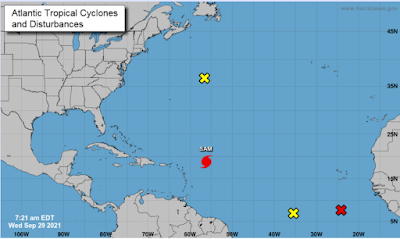Written by the TreasureGuide for the exclusive use of the Treasure Beaches Report.
Ole Ginnerup Schytz had never used a metal detector before. He first gave it a shot on a former classmate's land in Vindelev, Denmark, in December.
Within hours of turning his detector on, Schytz stumbled across one of the largest treasure hoards ever found in the country.
"Well, that's the epitome of improbable luck," the rookie detectorist said in an interview with Danish outlet TV Syd earlier this month. "Denmark is 43,000 square kilometers, and then I happen to choose to put the detector exactly where this find was."
Here is the link for more about that.
Thanks to SuperRick for that one.
---
Pure LUCK! It makes a good story. Everybody likes to read about the sobbing fairy prince suddenly transformed into a beautiful maiden by the sudden kiss of a flying toad. But is that how it really happens?
You've read it before; "Ten-year-old finds pile of gold." or, "Lady finds rare gold royal first time detecting." But if you look a little deeper you'll almost always find there is more to the story.
Take the today's lead story. The new detector user was on a former classmate's land. Do you suppose the classmate had provided some information about the possibility, or probability, of there being something good on that land, and maybe even gave some hints on good places to look? Do you suppose the classmate suggested a good detector that worked well on the site - maybe even the same kind of detector that the classmate used?
In most of these kinds of stories, it is not just blind luck hitting someone in the face like a flying toad. Not only do they have some luck, but they also get some help. You might call it borrowed skill. That can be a temporary loan unless you build on it.
Usually you'll find out that the lucky ten-year-old just happened to have a very experienced and helpful father, and the first time user had some very knowledgeable friends along.
There are indeed those rare cases when blind luck strikes from nowhere like the proverbial flying toad that I just invented, but in the vast majority of cases there is more to it than that.
---
I mentioned that I did a little beach detecting Tuesday and mostly found small bits of lead and copper. I took a few photos to show a small sample of the types of things I was digging in that one small area.
Here are a couple cuprous finds. The one on the right is really small, thin and light, yet the Equinox picked it up with no difficulty.
 |
| Couple Small Cuprous Finds. |
 |
| Cuprous Object With Small Caliber Dug Lead Bullet. |
 |
| Side and Top View of Small Unidentified Lead Find. |
 |
| Front (left), Back (center) and Partially Cleaned Find (right). |
After cleaning it, it doesn't look like a button to me. Still don't know what it is. It is the second largest item I picked up that day.
===
 |
| Source: nhc.noaa.gov |
Now we have hurricane Sam and tropical storm Victor. It looks like they will all remain far out in the Atlantic. It does however look like we'll have a little higher surf on the Treasure Coast.
 |
| Source: MagicSeaWeed.com. |
The tides are pretty flat now.
---
Too bad our public health agencies have lost so much credibility with so much of the public. Here is a good informative article.
San Juan Summit: Undertreatment Cited as Cause for Deaths - Global Covid Summit
And those who claim to care so much about the disease completely ignore the epidemic of fentayl deaths.
---
Hoping you get hit by the flying toad of luck and increasing level of skill.
TreasureGuide@comcast.net














































